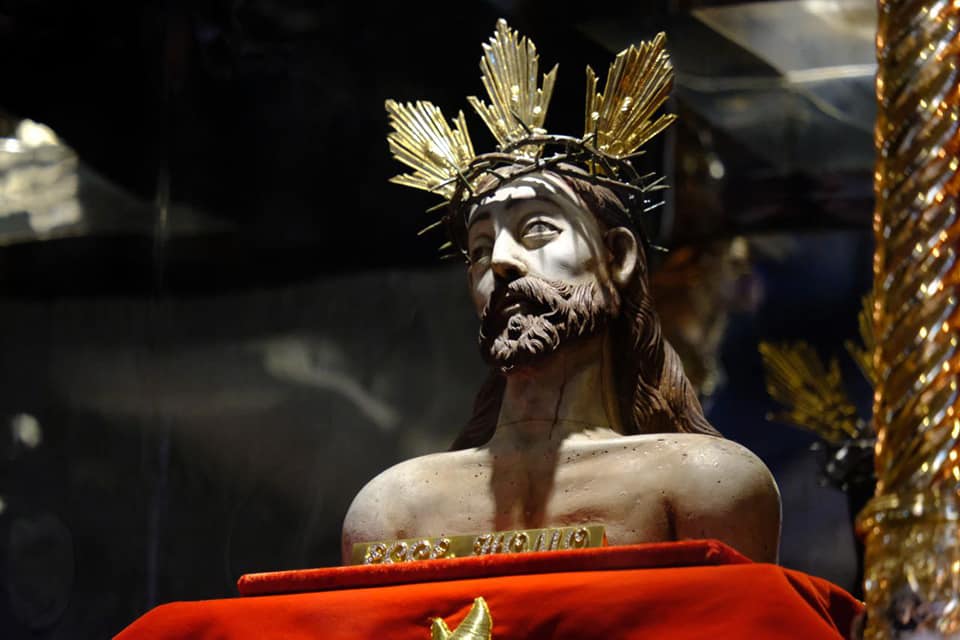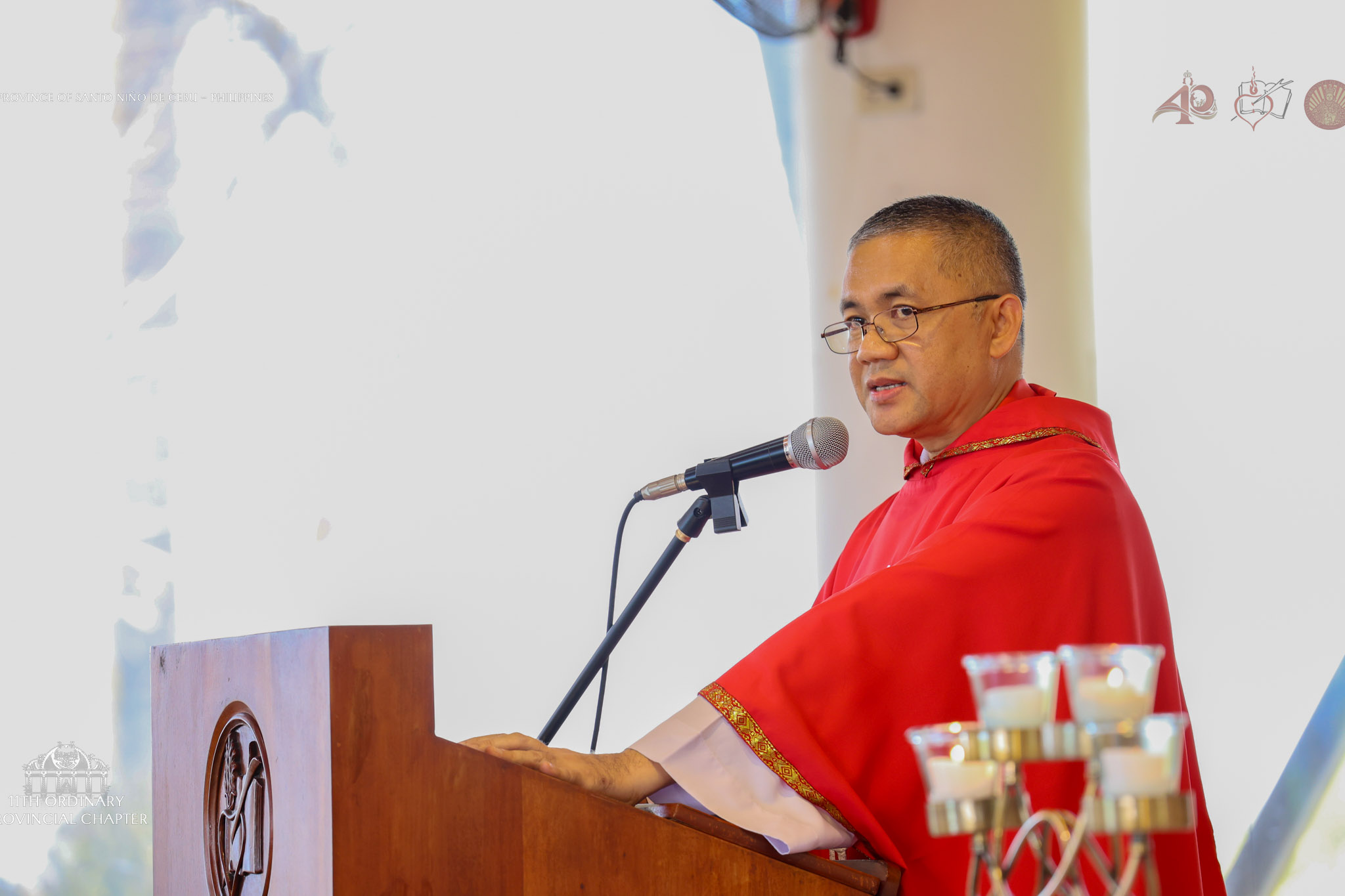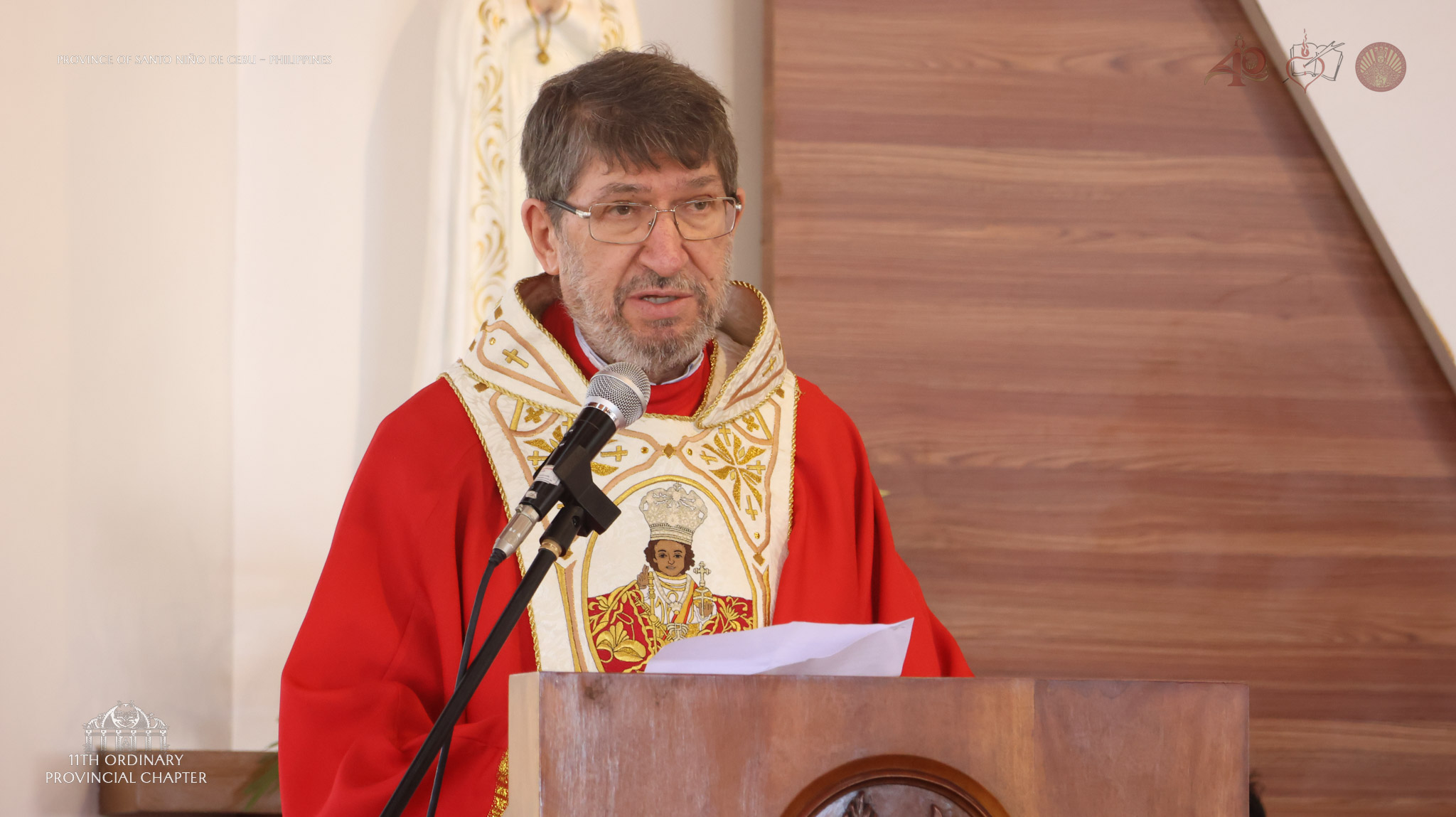450th Anniversary of the Finding of the Ecce Homo Image (1571 – August 20 – 2022): A Historical Account and Biblical Reflection
by Fr. Ericson M. Borre, OSA and Fr. Ric Anthony A. Reyes, OSA
In the first half of the 16th century, the Spanish fleet led by Portuguese navigator Ferdinand Magellan reached the Philippine shore. Of the original five ships, only three crossed the Pacific and reached the Las Islas de Poniente. Just like any long journey, the ships were loaded with many supplies, particularly provisions that would last for several months. It is noteworthy to mention that every single ship also was laden with cargo for merchandizing, weaponry, and gifts to those who they would offer friendship along the way – these varied from important metals, clothes, home and kitchen wares, arts and crafts, and religious icons.
Though it was not the Philippines that the Spaniards together with Magellan intended to find, they established themselves and made friendship with the natives of several islands and the island of Zebú (Cebu). They raised crosses in many places and donated gifts including the image of the Sto. Niño and the Virgin Mary. Forty-four years later, a relic of Ecce Homo – a sculpted wooden bust of the suffering Christ, was uncovered and was believed to have been brought by Magellan’s fleet.
The “Ecce Homo” in History
The image of the Ecce Homo started to surface in Spanish medieval art as part of the representation of the mysteries of the passion of the Christ.[1] In the 15th century, however, artists started to depict a separate image of Christ alone,[2] like the Cristo a la columna, La flagelacion and the Ecce Homo.
Since Catholicism played a great role during the Spanish expeditions, chaplains were present and took charge of the spiritual needs of the crew and the passengers. Masses were said for the safety of the crew and the vessel. Thus began the practice of bringing with along themselves liturgical paraphernalia and religious materials. Religious images and icons were among the common cargoes loaded into the ships bound for expeditions.
Although Pigafetta never mentioned in his account the image of the Ecce Homo, it is illogical to say that what they brought was limited to what was only mentioned. Besides, the historical timeline of the existence of such prevalent artwork, or at least its portrayal, coincides with Magellan’s expeditions from Europe to the Far East. It is noteworthy to mention that along with the devotion to the Sto. Niño, Mater Dolorosa a devotion to the Ecce Homo was already present in Spain during the same period.
The Ecce Homo is believed to have been brought by Magellan to Cebu. The image was a gift of Magellan to Rajah Hamabar, also known as Humabon, after his baptism. He later took the name Charles. Its narrative, however, could not be found in Antonio Pegafetta’s Il primo viaggio intorno al mondo. Its discovery was uniquely narrated by Gaspar de San Agustin in his Conquistas de las Islas Filipinas: “The finding of the Ecce Homo in Cebu coincided with the same day Miguel de Legazpi died in Manila on August 20, 1572. It was unearthed in the place where the famous and ancient leader of the island named Rajah Carli (assumed to be Humabon because of its proximity to Carlos) was said to be buried. It was also found by a soldier named Juan de Castilla who wanted to erect his house in that place. While digging, he uncovered a casket with a dried corpse presumed to be a baptized Christian during the time of Magellan because it had a small cross in his hands, while on his chest, they found the Ecce Homo. The image also caused them much admiration. Thus, they carried it with devotion to the church and place it on the tabernacle. Gaspar added that the written testimony of this admirable finding was preserved in the archives of the municipal council and in the regiment of the city that has been gifted and privileged so many times by the Lord with similar mysterious discoveries.”
The only other historical annotation of the image was in Martin de Rada’s writings, known as the Memoria, wherein Diego de Herrera was sent back to Spain and Martin de Rada asked him to mention to King Philip II about the Sto. Niño and the Ecce Homo, which were rediscovered in the archipelago. As mentioned by P. Manuel Diez Aguado in his article about the Ecce Homo in 1921. During the fourth centenary of the arrival of Magellan in the Philippines, he was surprised that the image of the Ecce Homo barely attracted any attention of the historians and that there is little literature about the image. There are a few reasons given as to why such an image does not have the same recognition as the Magellan’s Cross and the Sto. Niño. One reason was because, as shown even in the archive of the convent of the Sto. Niño, there is no evidence that a feast was held in its honor or any celebration that would promote its devotions to the Cebuano people. Another reason is because Cebu is overwhelmingly filled with the feast and celebrations of the Sto. Niño.
The image stayed throughout in Cebu until 1965, when it was brought to San Agustin convent in Intramuros, Manila during the celebration of the 4th centenary of the Christianization of the Philippines. Then it stayed there for 46 years as one of the important pieces of the convent museum. It was only in 2011 that it was returned to the Basilica Minore del Sto. Niño upon the request of the late Ricardo Cardinal Vidal, who brought back that important relic in the history of Cebu. It is now enshrined at the right wing of the church. Although it is not as famous compared to the first two relics, the Augustinian friars tried to promote its devotion, but it was always overshadowed by the celebrations of the Sto. Niño even until today.
The “Ecce Homo”: A Biblical Perspective
The whole life of Jesus is a redemptive offering to the Father. This includes every aspect of his life from the incarnation to the blessed resurrection. Such is the reason why we develop different aspects of devotion to the person of Jesus. We pray meditating His heart, His Wounds of the Passion, His Divine Mercy, His humanity as the Nazarene, his Childhood and many other Christological devotions. In the biblical designation of another Christological mystery, particularly the Ecce Homo (“Behold the man”)in reference to John 19: 5, we are celebrating another aspect of the person of Jesus Christ.
Through a revered icon of the Ecce Homo, we encounter the face of Jesus, suffering and in pain. It reminds us of His blessed passion especially at the point of rejection at the hands of His persecutors represented by Jewish leaders and by the Romans. Yet, this rejection of the Son of God offers us a reflection that once again highlights that despite the neglect humanity has committed against Him, Christ continues to offer us the possibility of commitment to mercy. Pilate’s words to “behold the man” is an invitation to reconsider and “re-view” the face of God not as a face of condemnation though condemned. Hence, behold the man who offers mercy once more!
In the Old Testament, God’s revelation includes the manifestation of his face. God’s presence is being longed for by those who yearned for his salvation. We hear the emphatic prayer of the psalm: “My soul thirsts for God, for the living God. When shall I come and behold the face of God?” (Ps. 42:2). This is motivated by God’s seemingly wonderful but terrifying presence that He would not reveal His face to people in order they not be overwhelmed by His Divine presence. It is a myth among the Jews that encountering Him would bring death to those who would like to see Him face to face (cf. Ex. 33:20). There is another story about the encounter of Moses who can speak to God face to face (Ex. 33:11), yet in the later part of the story God revealed to him His back and not the fullness of His glory (Ex. 33:23). The tantalizing condition of men seeing short of God’s face to the fullest, however, forms in one’s heart a buildup of longing and groaning. Pope Emeritus Benedict XVI tells us that the experience of Moses of the Old Law will be perfected in the Moses of the New Testament: In Jesus Christ, he will not just be the New Moses who sees God face to face but His own face is “a real, immediate vision of the Face of God […].”[3]
As it is a promise of an unhindered encounter of God’s Face, that moment which nourishes longing of God in life ignites the embers of hope of the future glory. The more we look for the face of God, the more we become changed in our perspective in life – dare we to even call it a conversion in seeing the value of everything in reference to the grace of hope God is bringing. Like Moses who asked God to show His glory, we continue to pray to God to reveal His face to us who is so merciful.
This is what is revealed to us in the devotion to Jesus in the Ecce Homo. All of us are sure of what we want to see in God: a merciful face, a face of compassion in the midst of His glory. God indeed responded to us in the fullness of time to bring into fulfilment this revelation in His Son Jesus who is “a real and unhindered vision of God’s face”. But since we prayed for God’s face now revealed in Jesus as merciful and compassionate, he gave us a face of a suffering man. According to the prophecy of Isaiah (Is. 53:2b-3), He is exalted and lifted in glory, but it will bring astonishment to us in his sufferings, familiarity with our pains, he was despised and rejected. It is only in this face of our God who suffers with us that we can understand the grace of mercy we long for Him. This is the twist of the devotion to the Ecce Homo: God does not simply transact graces to our lives so that we merely enjoy it without internalizing its meaning. God brought his mercy and compassion and the fullness of his salvation to us by choosing for himself to share first our sufferings and pains. Hence, in our longing to see a redemptive countenance, we must first unite our own portion of sufferings to His so that by His never fading glory of his Divinity, it will be transformed into a saving suffering. By this, we discover that in encountering the Face of God in the suffering Jesus, we are also being changed into persons and faces of hope and mercy to those who find meaninglessness in their misfortunes and weaknesses.
Pontius Pilate, in the moment he presented Jesus in the Gospel shouting “Ecce Homo”(“Behold the man”), is actually proclaiming the face of God to people who only dared to let him be crucified. Again and again, the proclamation of the man inflicted in pain and suffering is our example of hopeful trust that all the calamities of human life will become our steps towards our triumph over sin and death. When we hear of the Ecce Homo, let us not forget that as life does have its crosses, the same face of God unfolds the way to the newness of a resurrected life. There, our hope is being projected. The redeeming face of Jesus brings us to Him in his resurrection what we might rise as well in the newness of life in the midst of all human tragedies that befall.
References:
Antonio Pigaffeta. Il primo viaggio intorno al mondo. Limena, 2014.
Antonio de Herrera. Historia General de los Hechos de los Castellanos en las Islas y Tierra Firme de Mar Oceano. Madrid, 1726.
Antonio de Morga. Sucesos de las Islas Filipinas,1910.
Benedict XVI: Jesus of Nazareth. Vol. 1 (Adrian J. Walker, tr.). Doubleday: New York, 2007.
Francisco Colín, SJ. Labor Evangélica. Tomo I. Barcelona, 1900.
Gaspar de San Agustín. Conquistas de las Islas Filipinas. Madrid, 1698.
Juan de Medina. Historia de los sucesos de la Orden de N. G. P.S Agustín de estas Islas Filipinas. Manila, 1893.
Juan de Grijalva. Crónica de la orden de N.P.S. Agustín en las Provincias de las Nueva España. Mexico, 1985.
[1] Cf. La Flagelacion (1320). Altar Mayor de la Catedral de Gerona.
[2] Cf. Ecce Homo (siglo XV-XVI). Madrid-Descalzas Reales
[3] Benedict XVI, Jesus of Nazareth (vol. 1), tr. by Adrian J. Walker, p. 5.



